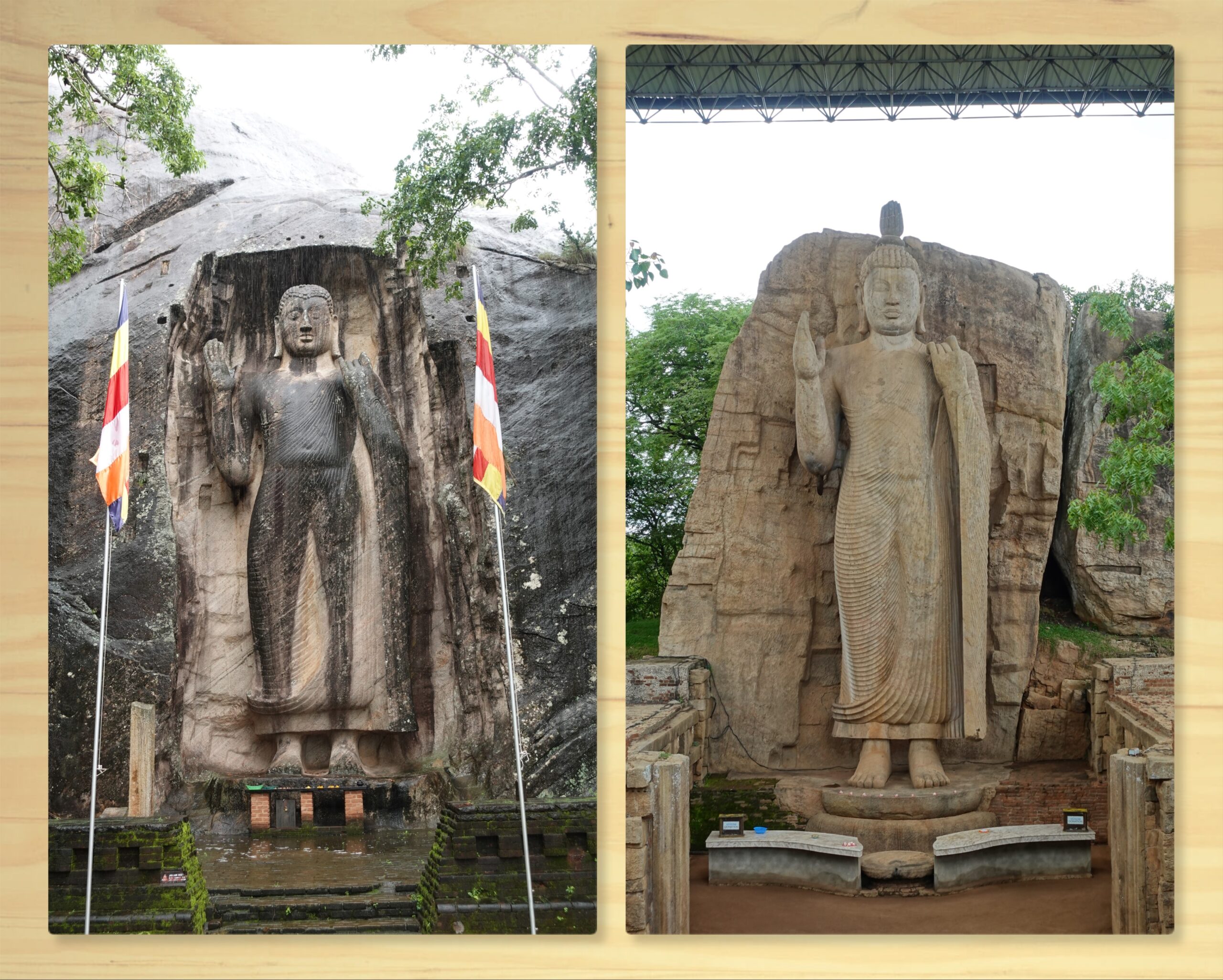Travels to Buddhist sites in India and Sri Lanka (26)
Sasserwa Giant Buddha and Awkana Giant Buddha - Visit the masterpieces of Sri Lanka's Giant Buddha that few people know about and visit them in the mountains.
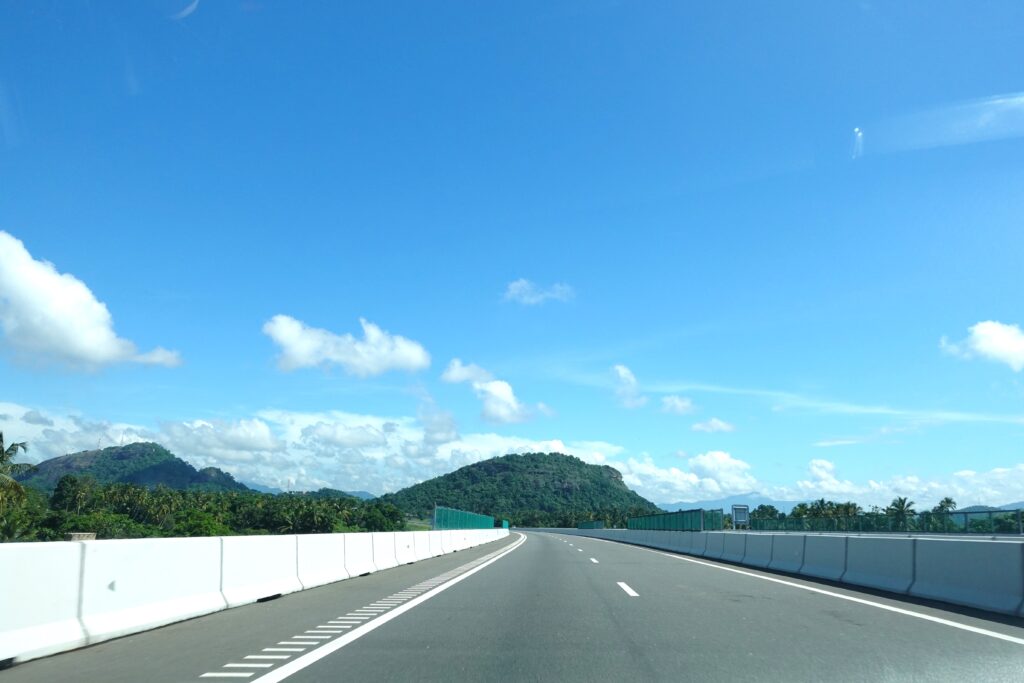
At one point, after driving down the highway, I got off this convenient road and changed course to a public road.
I am now heading for the Sasserwa and Awkana Buddhas, masterpieces of Sri Lanka's Buddhist art known to those in the know.
However, these big Buddhas are located in the jungle, far from major sacred places such as Mihintale and Anuradhapura. Needless to say, ordinary tourists would not stop at such remote places.
But I really wanted to see Sri Lankan Buddhist art with my own eyes. Written by Kayoko KusumotoThe Wonder of Sri Lanka's Giant Buddha.But we could not leave without seeing these highly acclaimed big Buddha statues. So, we decided to go see the two big Buddha statues before going to Mihin Talay, even though we were forced to go on a very tight schedule.
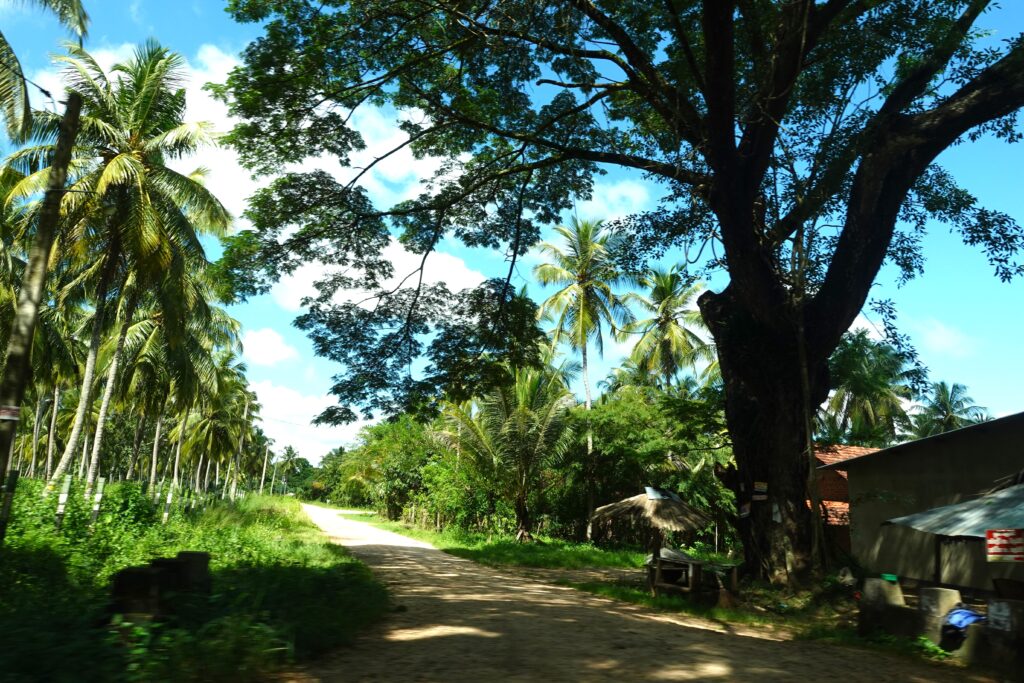
After getting off the highway, we drove along a remote road that only the locals would use. Perhaps because it was so remote, the car navigation system began to get confused, and we got out of the car and asked the locals for directions along the way.
We all laughed at the fact that we had suddenly arrived at a place that was more maniacal than we had imagined.
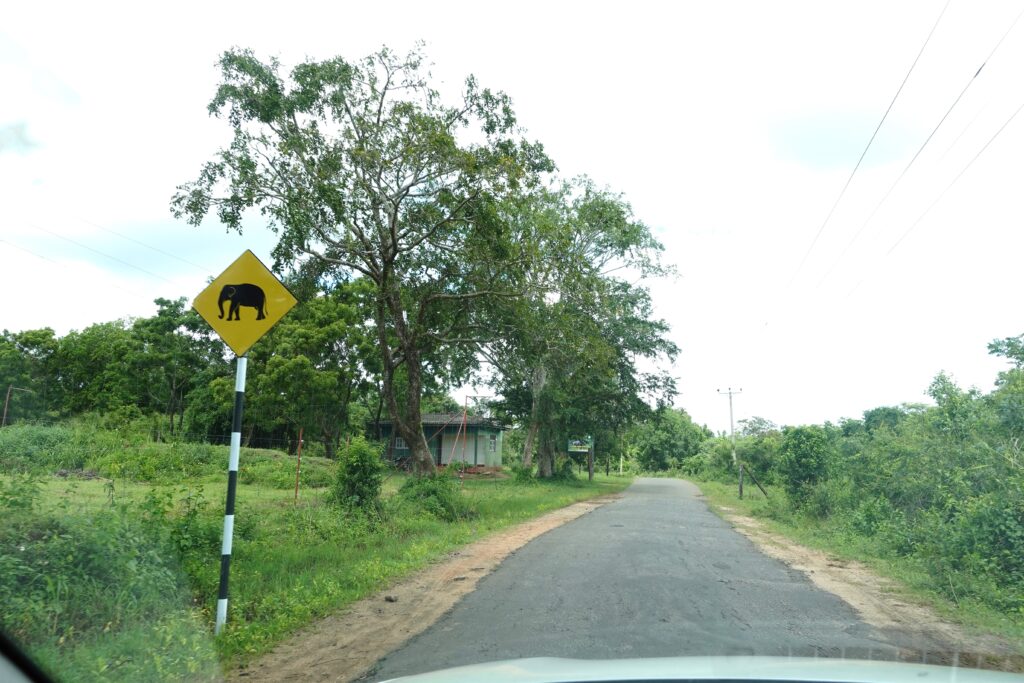
And I never forget.
This is the sign.
What a surprise,Beware of elephants."The first time I saw it, I was astonished. When I saw it for the first time, I was astonished. In Sri Lanka, wild elephants can be found everywhere in the jungle.
Don't be silly and say, "Oh, it's so nice to see an elephant. It's so cute!" Don't be foolish. Elephants in the wild are dangerous. In Sri Lanka, there are deaths every year. They also devour crops and destroy homes. So the local people take turns to take care of the elephants by keeping each other awake.
This is scary...
But then it occurred to me. This may be similar to the bears in Hokkaido. Even the big city of Sapporo has seen bears recently. The people of Hokkaido-are painfully aware of the fear of bears. I felt a strange sense of solidarity with the people of Sri Lanka.
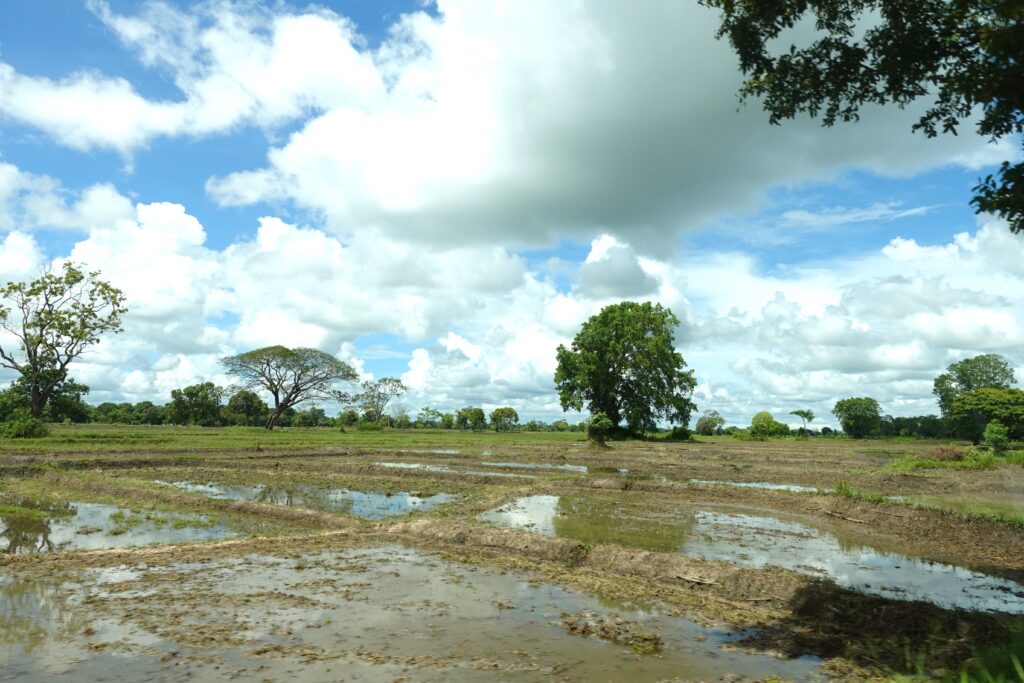
Still, it is beautiful.
Previous Article(25) How is the climate in Sri Lanka? I thought about the relationship between climate and religion. And a word about Japanese Buddhism."But as I told you, this place is located in the wet zone of Sri Lanka, so water is abundant. This area is also used for paddy fields.
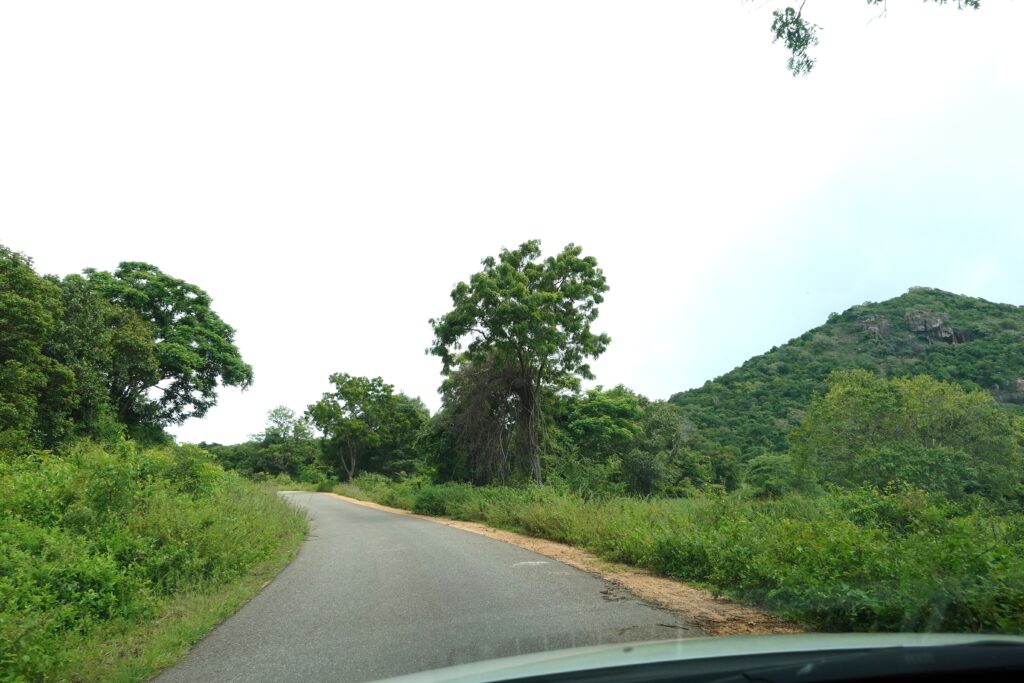
Now, finally, we are in the mountains. The Great Buddha of Sasselwa is close.
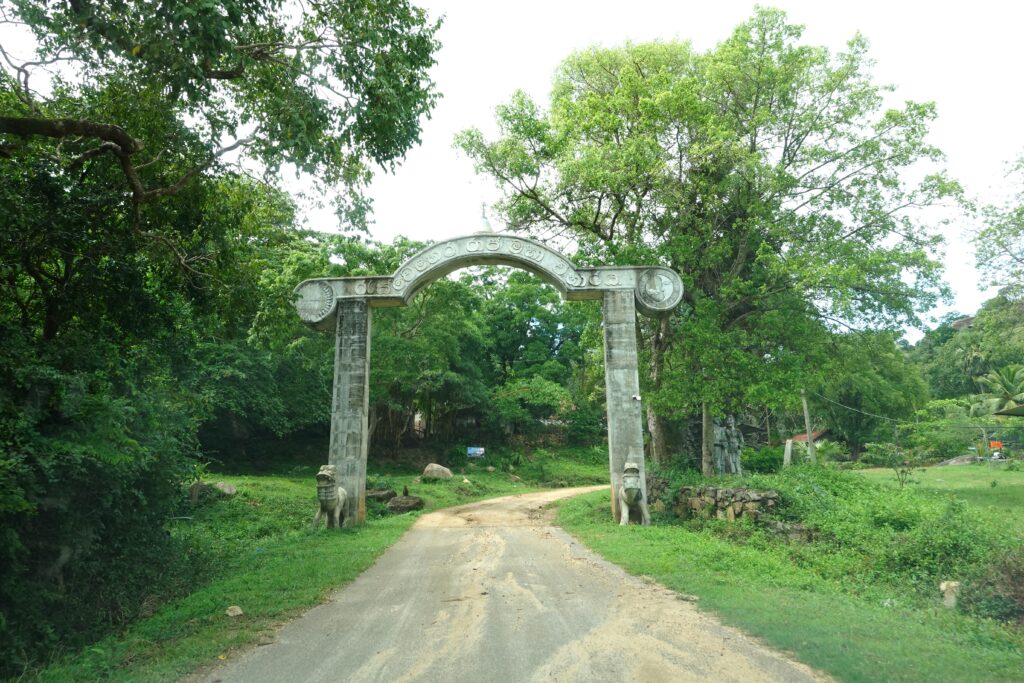
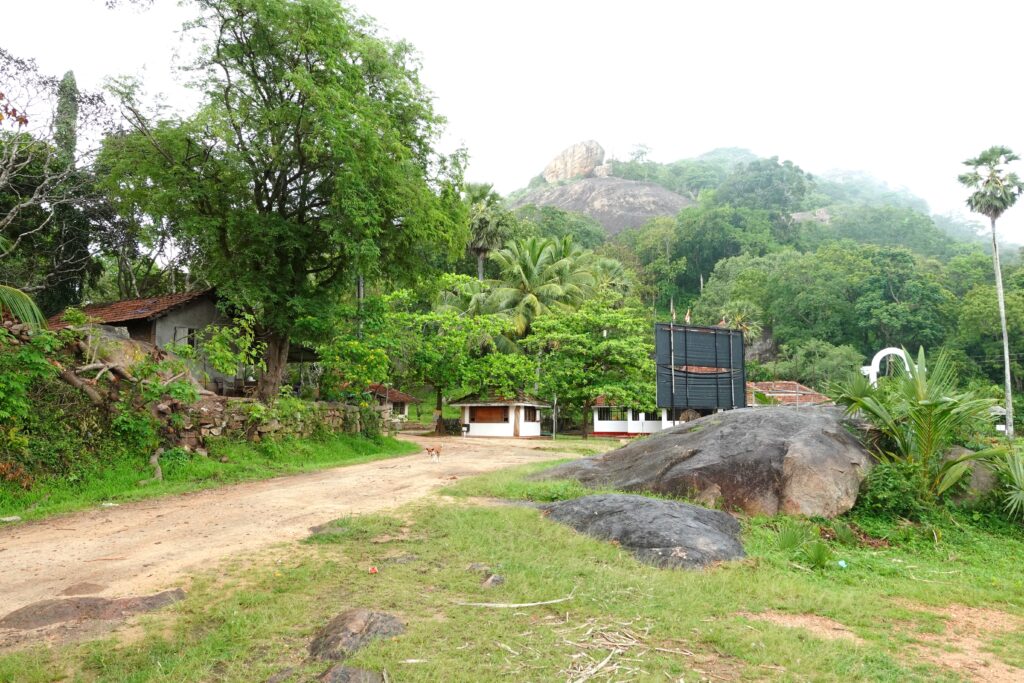
Finally, we have arrived. It took less than four hours from Negombo to here. I was already groggy from the fatigue I had accumulated in India.

And it started to rain. It was indeed a wet zone. Just as the cold wind began to blow, the sky darkened and a strong rain started to fall.

There is also a huge linden tree in the precinct.
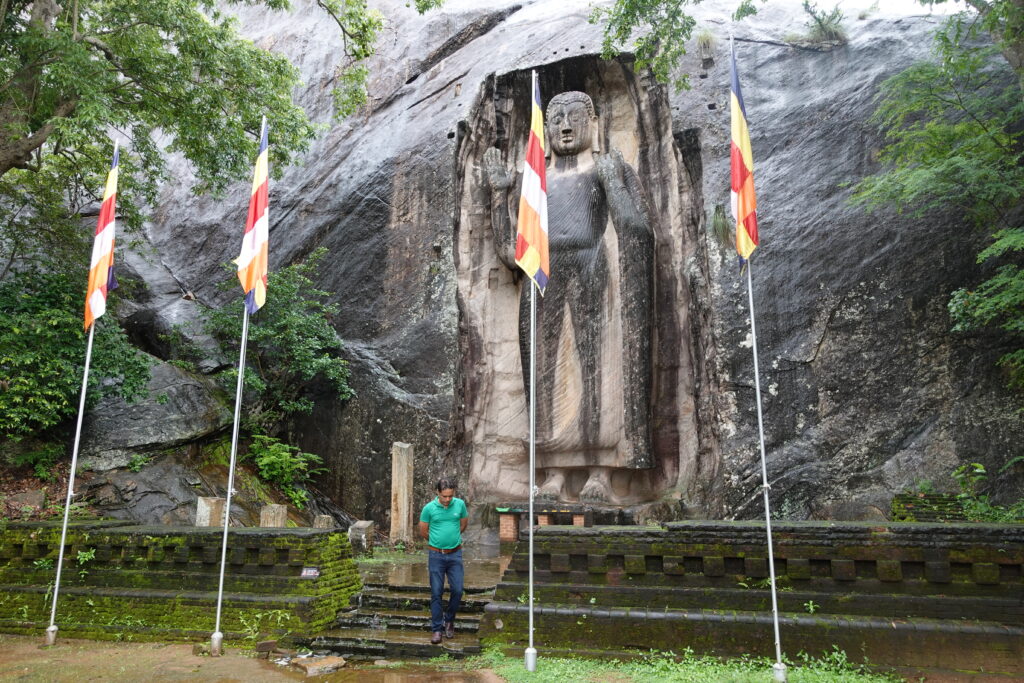
Then, at the top of a steep staircase, the Buddha image in question suddenly appeared. This is the Great Buddha Sasserwa.
Like the Great Buddha of Bamiyan, it was carved out of a huge monolith. It is about 12 meters in height.
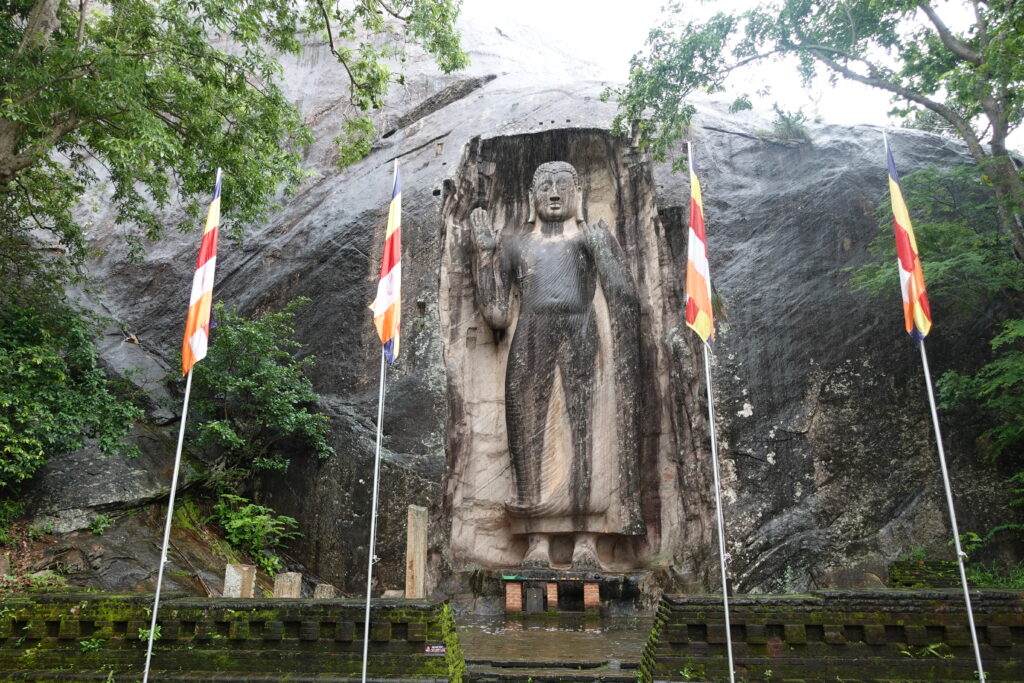
This is the first Buddha image I saw in Sri Lanka. It is indeed a large Buddha image. I was amazed that they could build such a large statue so deep in the mountains.
Here by Kayoko KusumotoThe Wonder of Sri Lanka's Giant Buddha.I would like to see more explanations of this Buddha image.
I was amazed. That was my first impression. It's good. Very good. Buddha is alive.
Why is it so good? Despite the fact that it is a giant statue measuring 12 meters, it is not intimidating at all. Rather, it is a mysterious giant Buddha with a warm atmosphere. (Abbreviations omitted).
After gazing intently for a while, the mason's work gradually became visible.
First, the face of this statue is not symmetrical. The eyes, in particular, are close to human and do not resemble any other Buddha statue I have seen. Second, the face is generally positioned toward the right side. It looks natural and calculated, as if it was done intentionally. The slightly displaced head caused movement, and I felt that the Buddha began to breathe and speak softly through eyes that were slightly different from the left and right.
The expression of the robe appears rough compared to that of the aukana Buddha, but it has a shimmering quality that is rather natural. The legs are standing strong, bearing the weight of the body. Some people think the figure is not finished, but I do not feel any discomfort.
The right hand is not facing sideways but facing forward, which is typical of the Shi-Mu-Awe sign, but this kind of sign is rare in Sri Lanka, where the sideways direction is more popular. The date of creation of this image is unknown, but there is a theory that it may be a Buddha belonging to the Mahavihara school (a large temple school), created in the 3rd or 4th century A.D., early in the post-period of the Buddha. However, this is too early.
Like the giant Buddha of Bamiyan, Afghanistan, this statue was carved out of a rock in a rocky mountain, and the Buddha image was carved out of the center of the rock. Except for the damaged fingertips of the right hand, there is no major damage, and the Buddha has a truly gentle expression on his face.
Hozokan, Kayoko Kusumoto, The Wonder of the Giant Buddha of Sri Lanka: Who, When, and For What Purpose, p.154-155
It is also typical of Sri Lanka that it is still a mystery when this great Buddha was created. I am sure you will understand the meaning of the word "typical Sri Lankan" in the near future.
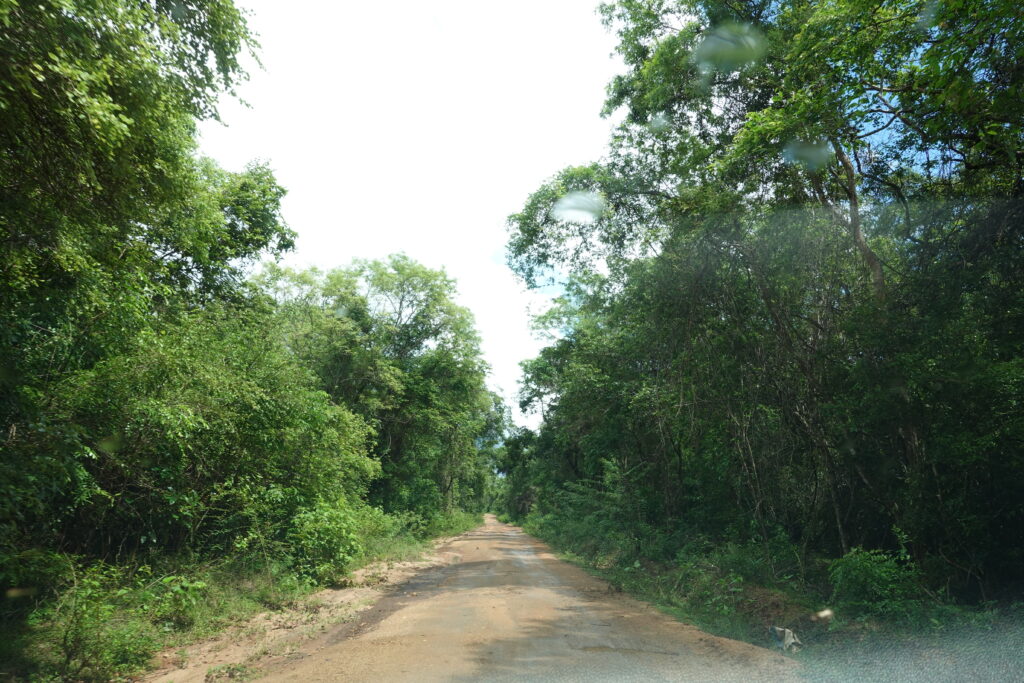
From here, the next stop was the Great Buddha of Aukana. This is a more famous Buddha statue than the Great Buddha of Sasselwa. It took about an hour to reach the Aukana Buddha area, but the road on the way was so bad that I thought the car might break down. The driver seemed to have never been on this road before and was surprised.
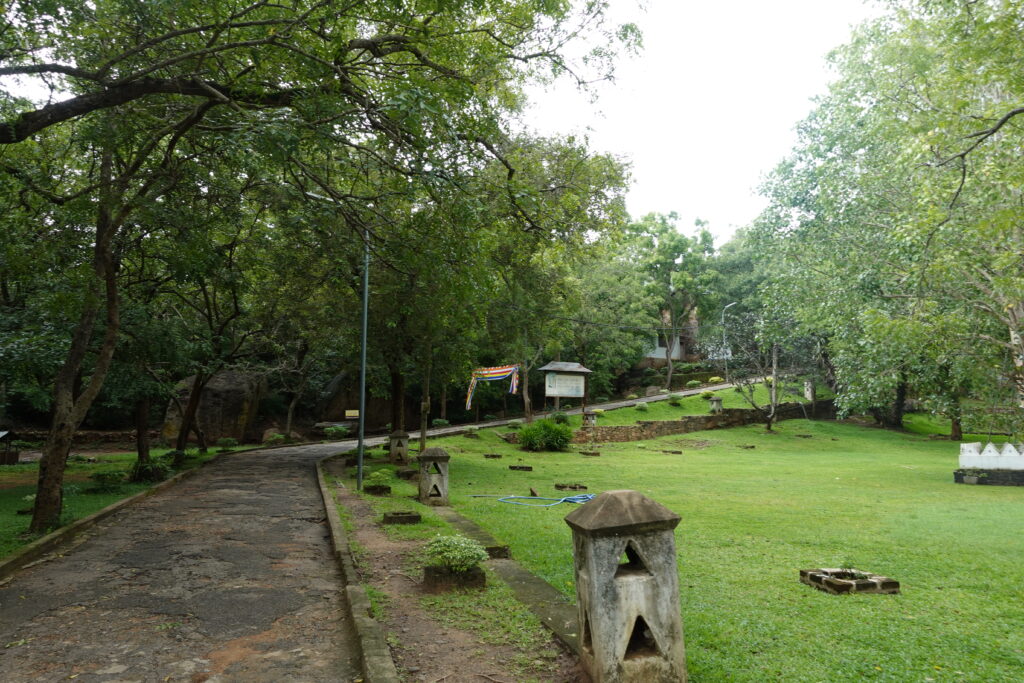
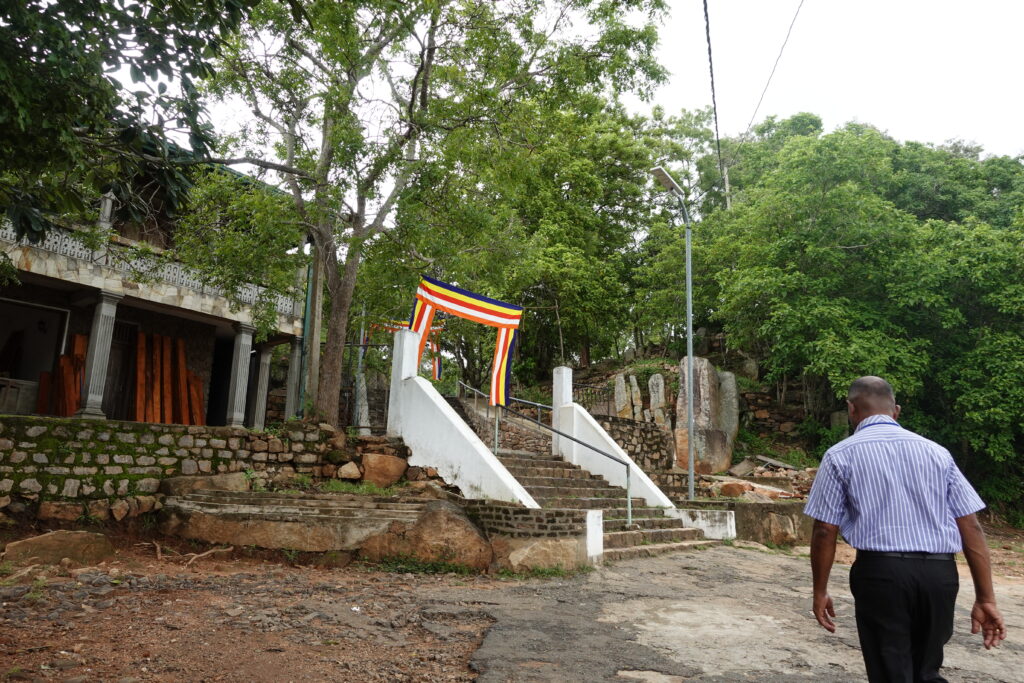
Now, we arrive at the entrance to the Great Buddha of Aucana.
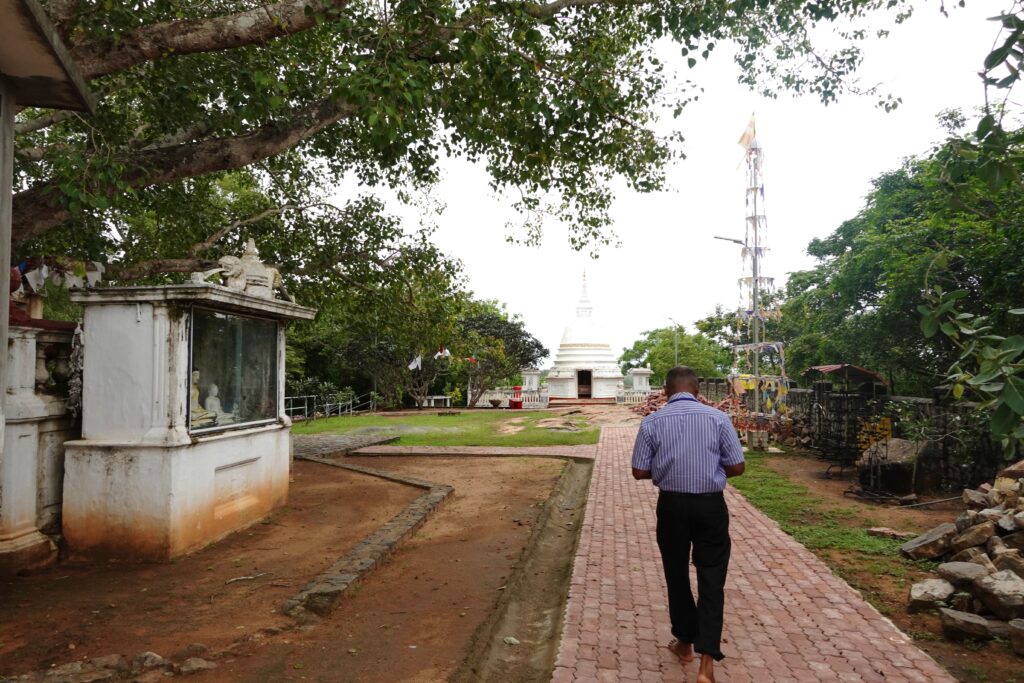
The Great Buddha of Aukana is easy to reach from Mihintaleh, giving the impression that it is a relatively touristy place.
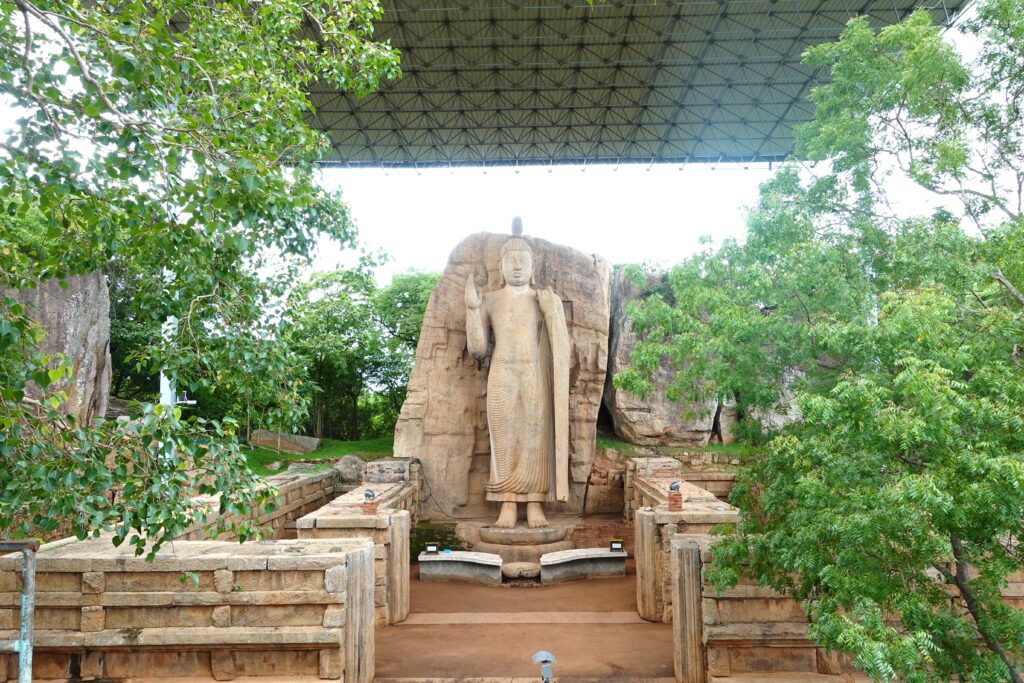
This is the famous Aukana Buddha statue. It is much larger than I had imagined. I couldn't help but let out a "wow" sound.
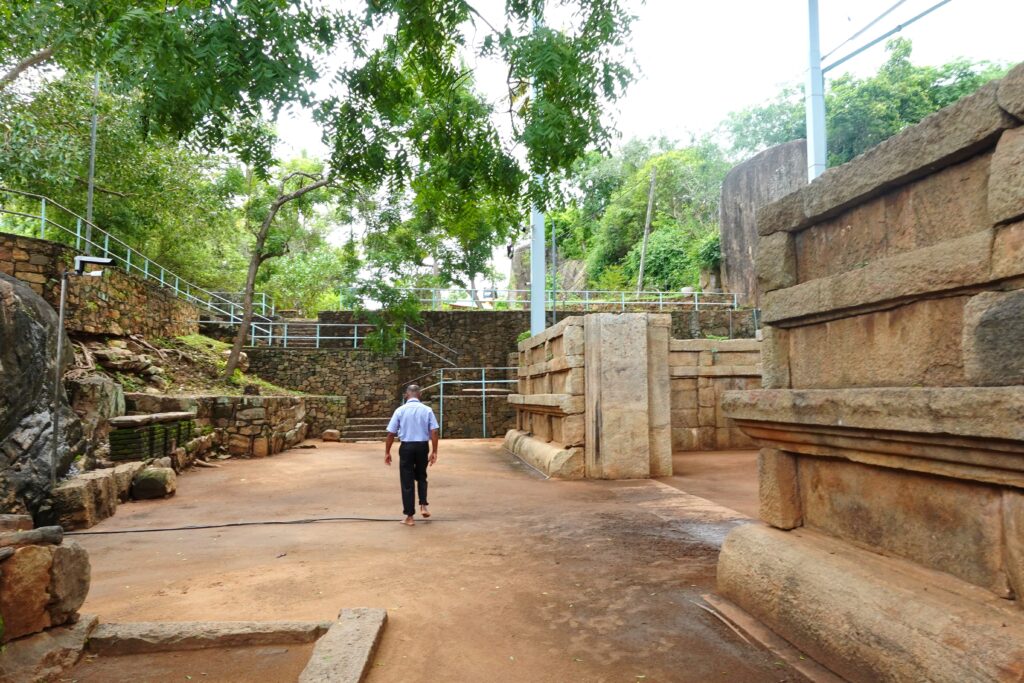
Come on, let's go closer.
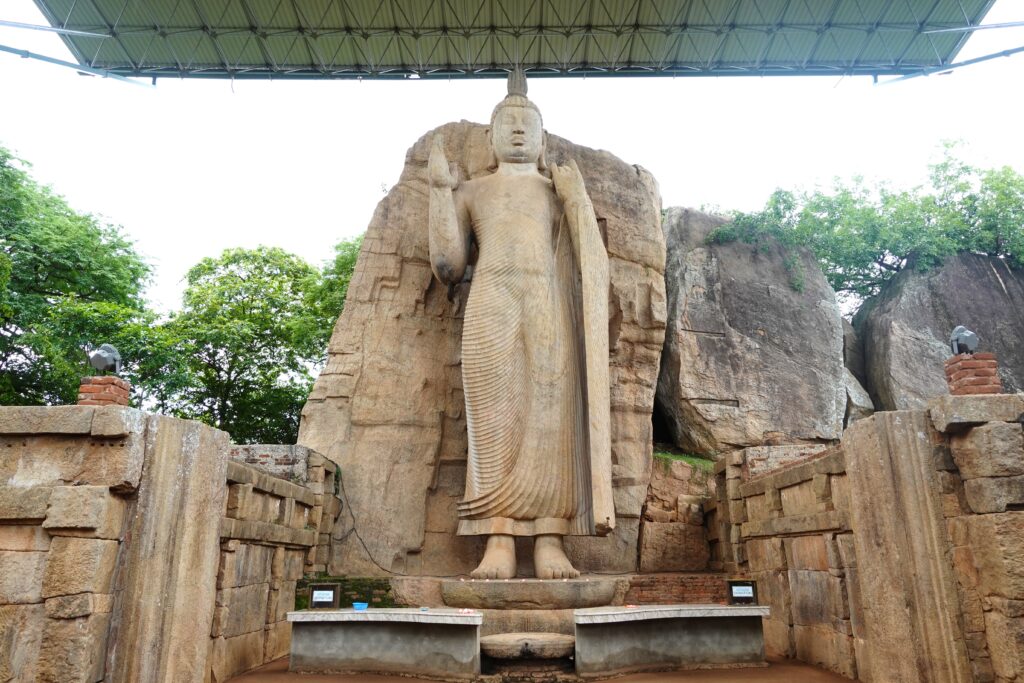
Oh, it is indeed very powerful.
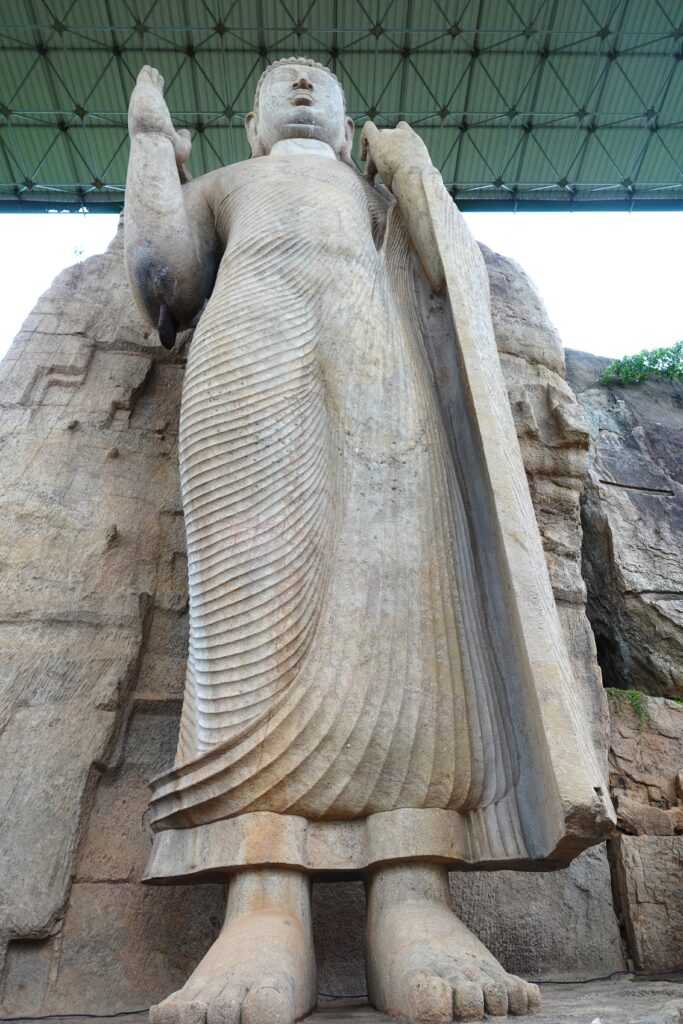
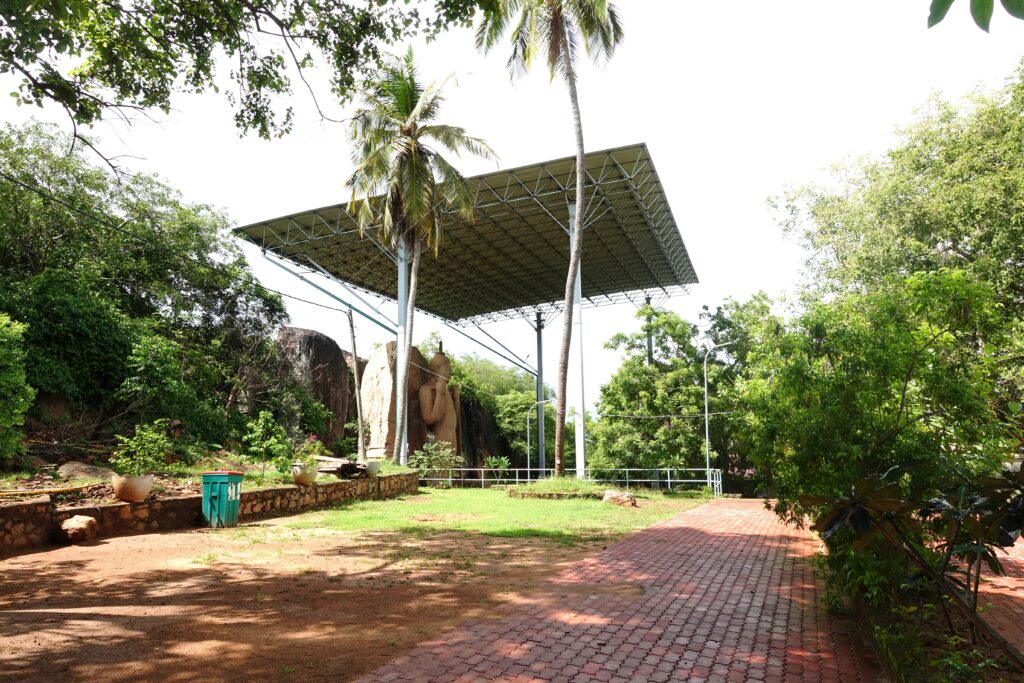
Looking up from directly below, one can see every detail of the Great Buddha, which is very impressive. The Buddha is integrated with the rocks behind it, giving it a sense of solid stability.
Now, here again, by Kayoko KusumotoThe Wonder of Sri Lanka's Giant Buddha.Let us listen to the explanation of the
The expression of the robe covering the aukana buddhas is rhythmic and without stagnation. When the sunlight hits it, the shadows are clear and each line emerges neatly. The stonemason's meticulous skill in carving the gathered folds that cover the robe from top to bottom shines through.
On the other hand, it is undeniable that the orderly craftsmanship sometimes seems somewhat inorganic. The folds of Aukhana Buddha's unbroken robe look like a monument of the noble and sublime, and they seem to be a symbol of something beyond the human Buddha's form, something incredibly great.
Hozokan, Kayoko Kusumoto, The Wonder of the Giant Buddha of Sri Lanka: Who, When, and For What Purpose, p.148
Indeed, the expression of the robe on this Buddha image is unique. This is something that has not been seen even at Buddhist sites in India.
And the following commentary is also interesting.
The abundance of rocks in Sri Lanka, and the fact that the country is not subjected to cold temperatures that would cause the rocks to crack, has allowed them to remain in their massive form for many, many years.
The mother rock of the Aucana Buddha must have been a gem among the huge rocks scattered all over the place.
Michelangelo, the master of the Renaissance, was so inspired by the beautiful five-meter marble in front of him that he carved a statue of David.
The stonecutters who carved the Aukana Buddha must have shouted with joy when they came across this rock. (omitted).
It is highly likely that the mother rock of the Aucana Buddha was carved gradually downward from the head, buried in the soil, according to meticulous blueprints and measurements.
The topography of the area around the Aucana Buddha suggests that the soil in front of the mother rock has been artificially removed.
Hozokan, Kayoko Kusumoto, The Wonder of the Giant Buddha of Sri Lanka: Who, When, and For What Purpose, p.151-153
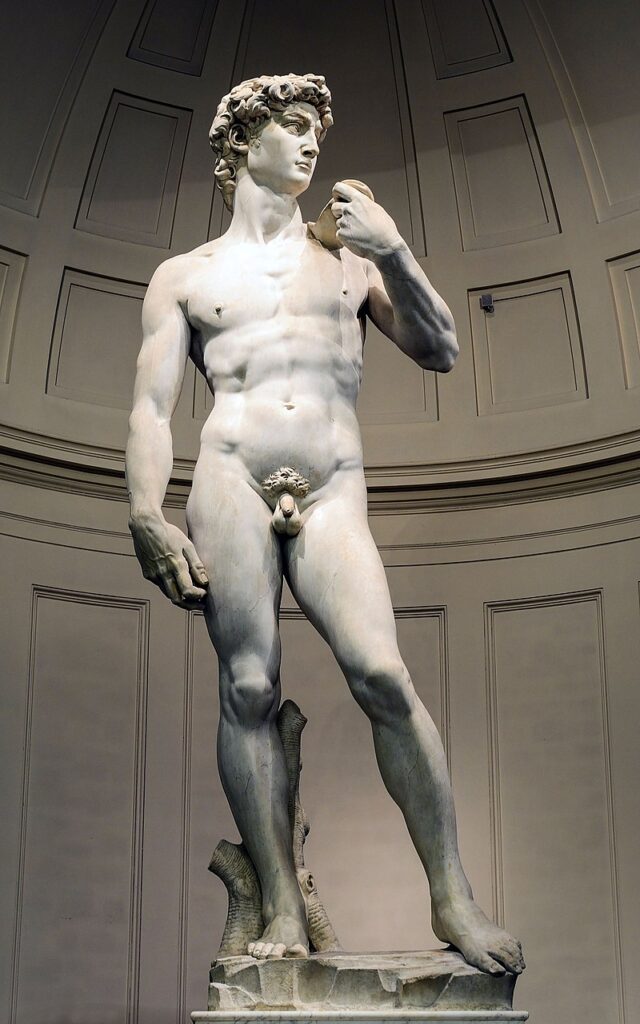
The process of carving a perfect sculpture from a single stone is the same as that of Michelangelo. It is indeed a very romantic explanation.
And although the exact date of creation of this great Buddha is not known, it is said to be probably from the 8th or 9th century.
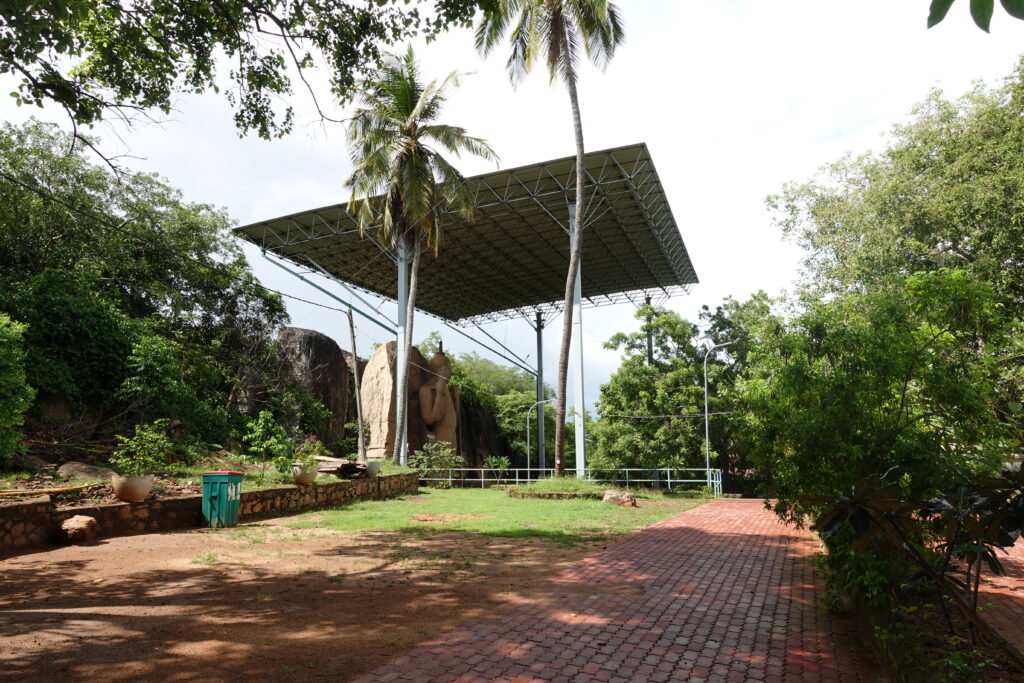
After visiting the Great Sasserwa Buddha and the Great Aukana Buddha, I finally departed for Mihintale, the birthplace of Buddhism in Sri Lanka. It had already been more than six hours since I left the hotel. It was indeed a tough trip. I was beginning to feel quite weak.
However, Mihintaleh, which I will talk about in the next article, was such a wonderful place that I, who was near the limit of my ability, was instantly invigorated. It is indeed a holy place among holy places. It was a mythical world that lived up to its name.
*Below is an article with reference books on India and Sri Lanka that we have referenced in this travelogue. Please refer to them.
periodA list of recommended reference books to help you learn about Indian history, religion, and culture."
periodA list of recommended books for "those who want to know more about Indian Buddhism."
periodA list of recommended books to help you get to know the Buddhist country of Sri Lanka."
Next Article.
Click here to read the previous article.
Related Articles











